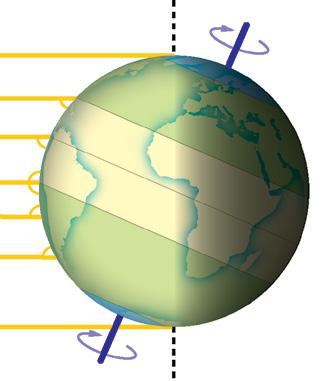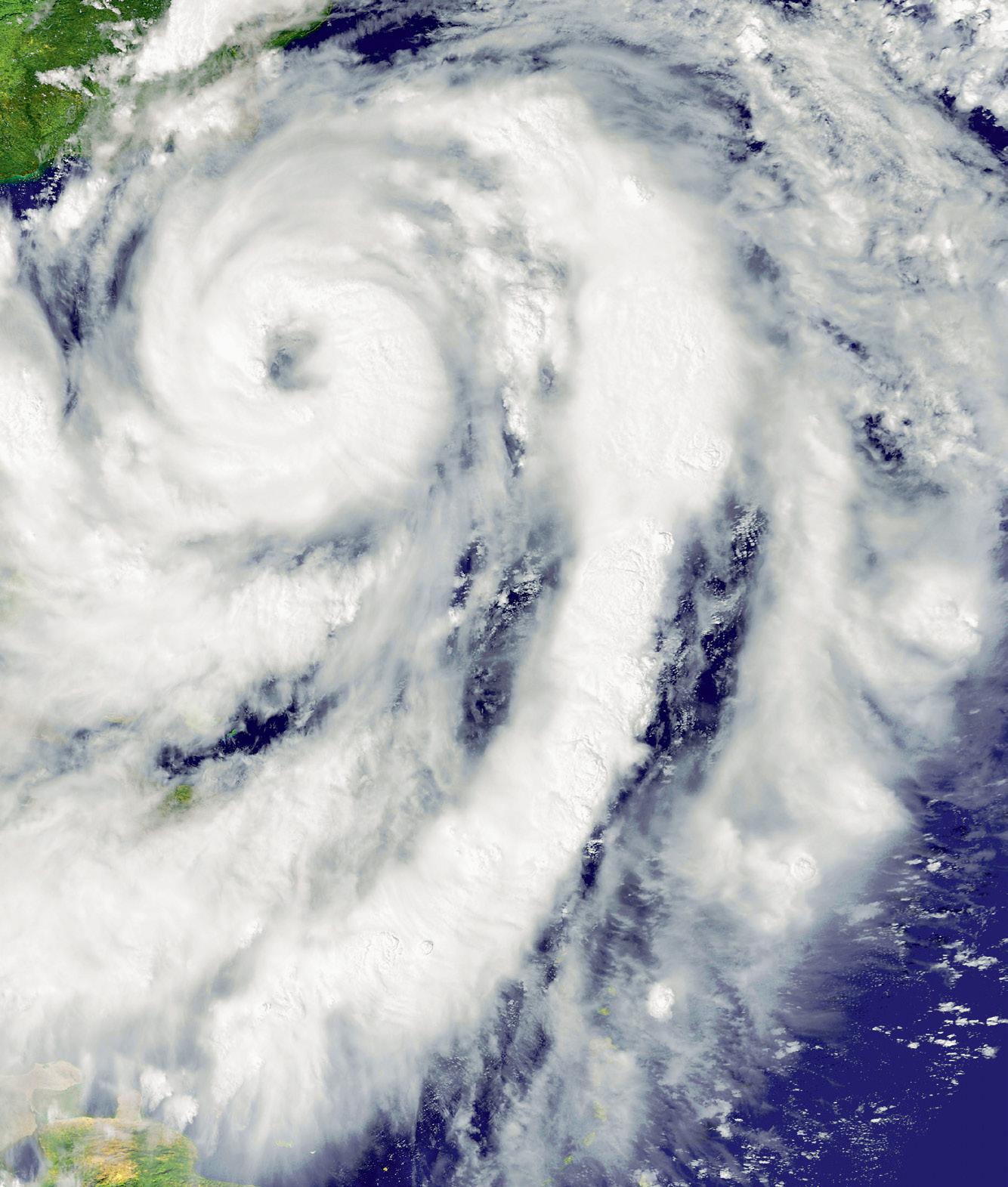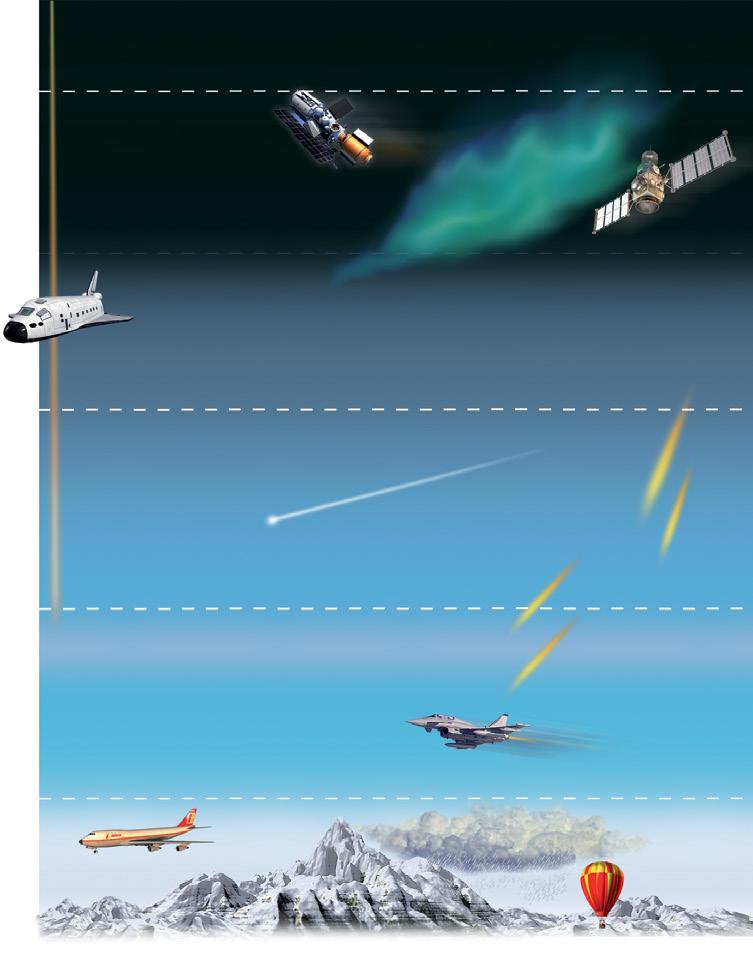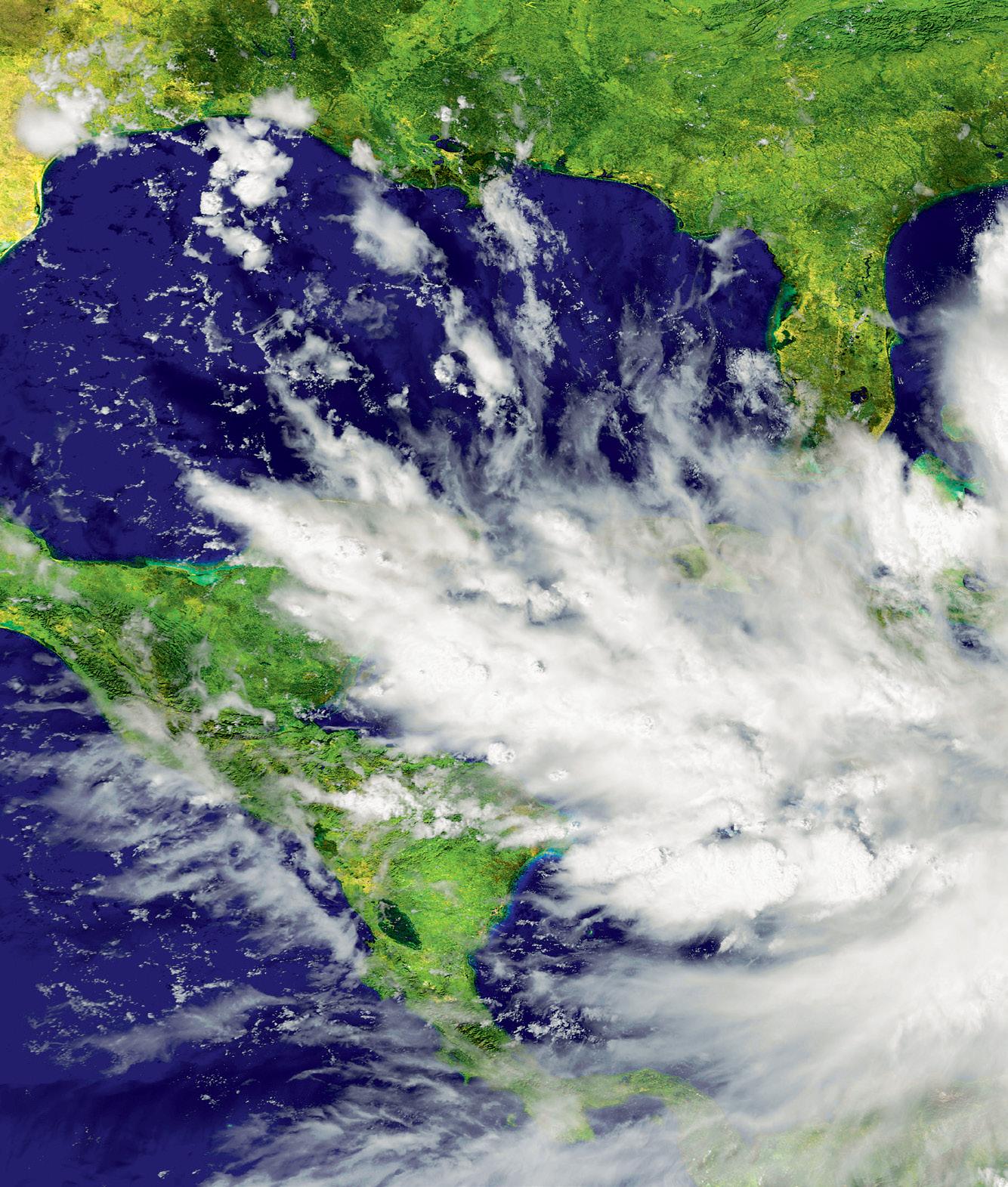2 ELEMENTS OF CLIMATE (I). TEMPERATURE AND PRECIPITATION
Latitude factor North Pole Arc
tic
ã 2.1 Elements of climate Elements of climate are components of the atmosphere that can be measured. The main elements are temperature, precipitation, atmospheric pressure and wind. They can all vary due to factors like latitude, altitude and distance from the sea, the unchanging characteristics that have a permanent influence on the climate.
ã 2.2 Temperature and its factors Temperature is the amount of heat in the air. It is measured with a thermometer and is expressed in degrees Celsius (°C). The factors that influence temperature are:
➜ Latitude. Temperature decreases from the Equator to the poles.
Tro p
ic o
Eq
fC
Cir
cle
anc
er
uat
Northern cold zone Northern temperate zone
or
Tro p
ic o
fC
An
apr
tar
ico
Southern cold zone
ctic
rn
Tropical zone Cir
cle
Southern temperate zone
South Pole
In hot areas, the Sun’s rays are more direct. This means that the heat is spread over a smaller surface area and it heats up more. Heat also encourages precipitation.
This is because the surface of the Earth is curved and the rays from the Sun hit the Earth at the poles at a very oblique angle.
➜ Altitude. Temperature decreases by about 0.6 °C for every 100 metres of altitude increased because the air, which is less dense, stores less heat.
➜ Distance from the sea. Temperature is milder on the coast and more severe inland, because the sea warms up and cools down more slowly than the land. On Earth, differences in temperature allow us to identify various thermal zones that are related to latitude: one hot, two temperate and two cold.
ã 2.3 Precipitation and its factors
Skills progress
Precipitation is the water that falls on the Earth’s surface from the clouds, in liquid form (rain) or solid form (snow and hail). It is measured with a rain gauge or pluviometer, and is expressed in millimetres (mm) or in litres per square metre (L/m2).
Organising information
The factors that influence precipitation are:
➜ Latitude. There is more precipitation at the equator and less precipitation in tropical, temperate and polar areas. Heat makes the air to rise which results in the condensation of the water vapour.
➜ Altitude and relief. Precipitation increases with altitude, because
1 Create a table comparing the characteristics of temperature and precipitation. It should contain the following: definition, instrument used to measure it, unit of measurement, factors, distribution on Earth. Analysing physical phenomena
cold temperatures favour condensation in the air. Also, when the air meets an obstacle such as a mountain, it is forced to rise and so it cools down.
2 Is rain the same as precipitation?
➜ Distance from the sea. There is more precipitation near the coast
in temperature and precipitation?
because the sea is a constant source of moisture. On Earth, annual rainfall varies from one region to the next. These differences allow us to identify areas with different levels of precipitation, ranging from very abundant to very scarce precipitation.
90
Justify your answer.
3 Which factors create differences 4 Where is precipitation more likely to happen, at the base or at the top of a mountain? Justify your answer.




